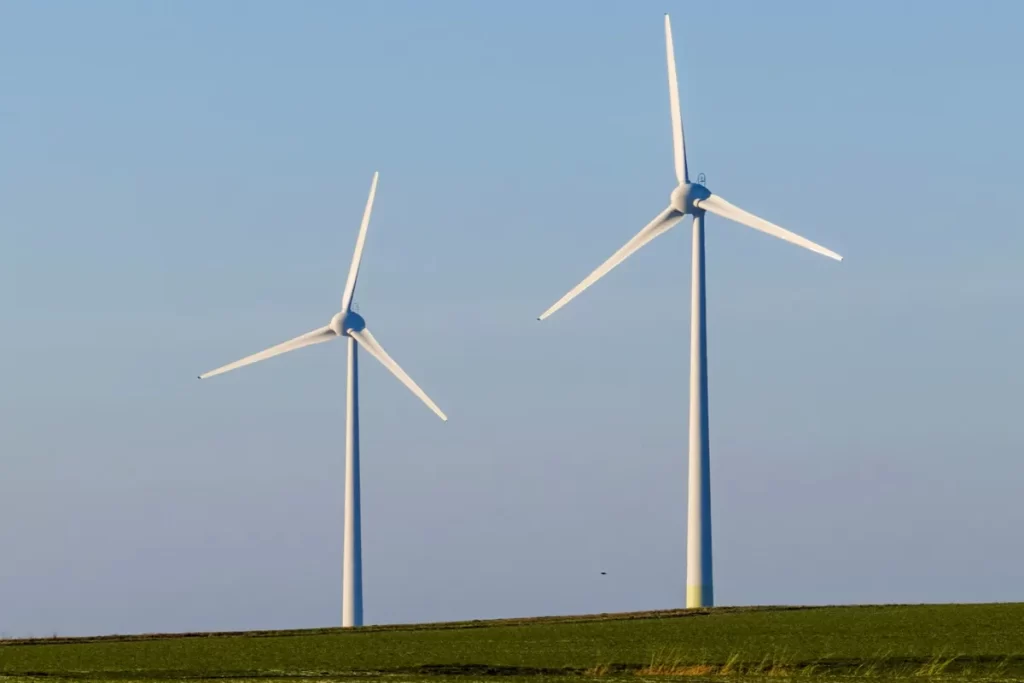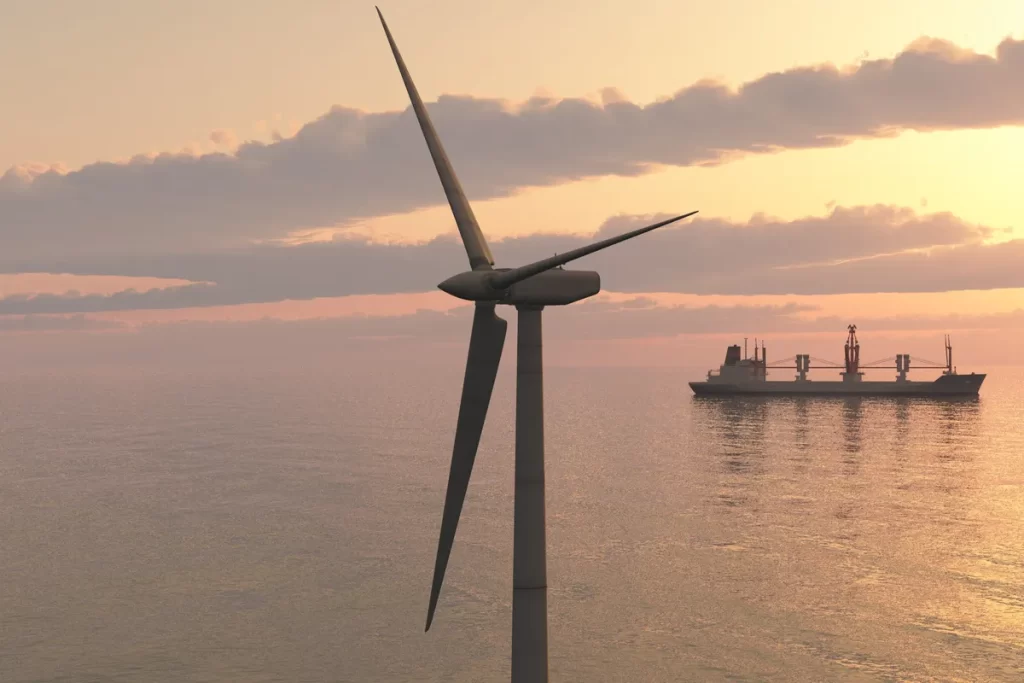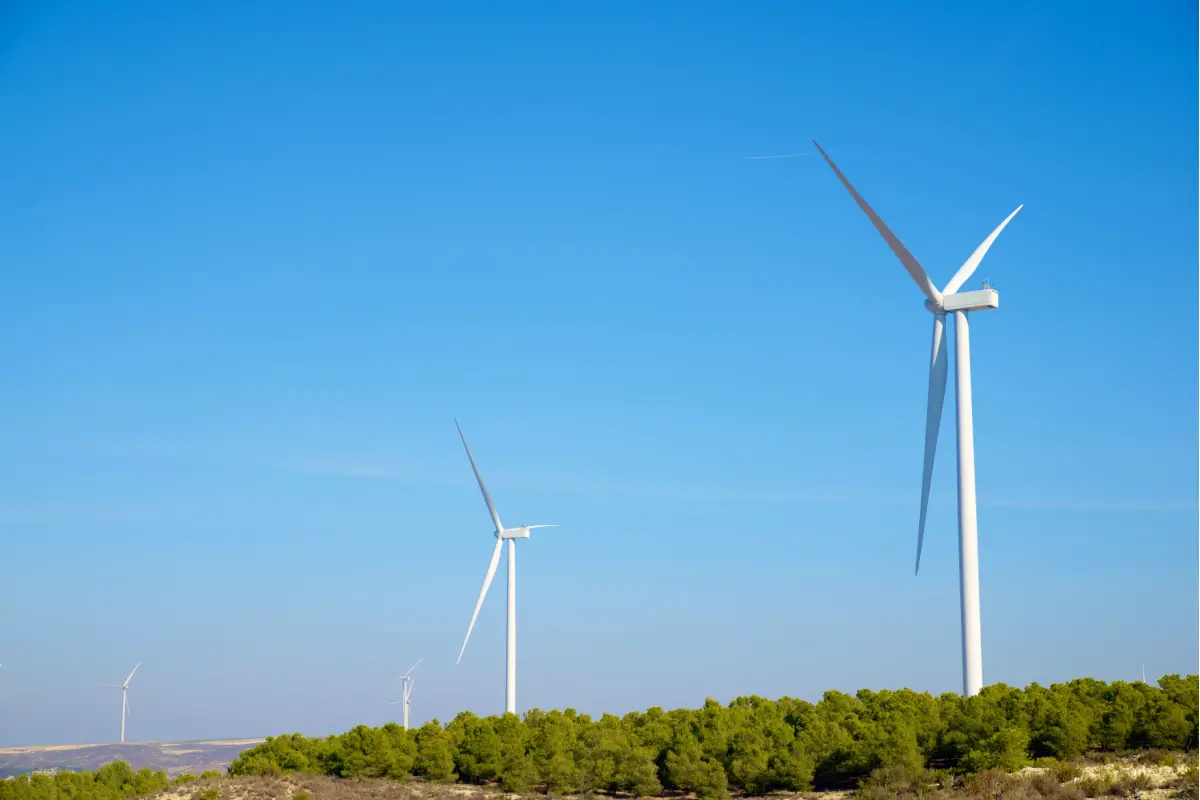Wind energy is a renewable energy source that is generated by wind turbines. Wind turbines convert the kinetic energy of the wind into electrical energy that can be used to power homes, businesses, and other facilities. China is the country with the most wind turbines. This is based on the fact that China has the largest installed wind power capacity.
Top 5 countries with the most wind turbines
Here are the top 5 countries with the largest installed wind power capacities (Source):
- China (329 GW in 2021): China is the world leader in wind power generation, with the largest installed capacity of any nation and continued rapid growth in new wind facilities. By the end of 2021, China had 329 GW of installed wind power capacity, which is more than the combined capacity of the next four countries on the list. The Jiuquan Wind Power Base, also known as the Gansu Wind Farm, is the largest wind farm in the world with a planned installed capacity of 20GW. It will comprise 7,000 wind turbines, which will be installed in Inner Mongolia, Jiuquan, Jiangsu, Shandong, Hebei, and Xinjiang Provinces in Gansu, China.
- United States (133 GW in 2021): The United States holds the second position in the world for installed wind power capacity, reaching 133 GW by the end of 2021. The U.S. has been actively investing in wind energy and expanding its wind power infrastructure across the country. The largest wind farm in the United States is the Alta Wind Energy Center in California, with an operational capacity of around 1,550 MW. Texas leads the nation in wind power generation, with the majority of the installed capacity located in the state. The U.S. government continues to support the development of wind energy through tax incentives and subsidies, ensuring steady growth in the sector.
- Germany (64 GW in 2021): Germany is a global leader in renewable energy, and wind power plays a significant role in the country’s energy mix. By the end of 2021, Germany had an installed wind power capacity of 64 GW. The country’s largest wind farm is the Gode Wind complex in the North Sea, with a combined capacity of 900 MW. Germany’s Energiewende, or energy transition, policy has been a driving force behind the growth of wind energy, as the nation works toward its goal of having at least 80% of its electricity generated from renewable sources by 2030.
- India (40 GW in 2021): India has been rapidly increasing its wind power capacity, reaching 40 GW by the end of 2021. The country has an ambitious target of achieving 60 GW of installed wind energy capacity by 2022, as part of its overall goal to generate 500 GW of renewable energy by 2030. The Bhadla Wind Power Park, located in the state of Rajasthan, is India’s largest wind farm with an operational capacity of 2,245 MW. India’s wind power industry has experienced substantial growth due to government support and favorable policies, such as feed-in tariffs, tax incentives, and the National Wind-Solar Hybrid Policy.
- Spain (27 GW in 2021): Spain is another European country leading the way in wind power, with an installed capacity of 27 GW by the end of 2021. Wind energy has become a key component of Spain’s energy mix, contributing significantly to the country’s goal of generating 74% of its electricity from renewable sources by 2030. Spain’s government has been actively supporting the growth of wind energy through subsidies, tax incentives, and regulatory frameworks, ensuring the continued development of this clean energy source.

Factors contributing to the growth of wind energy
The growth of wind energy around the world has been driven by various factors, ranging from government policies and technological advancements to the increasing awareness of climate change and the need for sustainable energy solutions. Here are some of the key factors that have contributed to the rapid expansion of wind power capacity in recent years.
- Government Policies and Incentives: Governments worldwide have recognized the importance of renewable energy sources, such as wind power, in reducing greenhouse gas emissions and achieving energy independence. Many countries have implemented policies, subsidies, and tax incentives to encourage investment in wind energy projects. Feed-in tariffs, renewable energy quotas, and net metering policies have played a significant role in making wind energy projects more financially viable and attractive to investors.
- Technological Advancements: The wind energy industry has benefited from significant technological advancements in recent years. Improvements in wind turbine design, materials, and manufacturing have led to increased efficiency, reduced costs, and enhanced reliability. Larger turbines with taller towers and longer blades are now capable of harnessing wind energy at lower wind speeds, expanding the range of suitable sites for wind farms.
- Decreasing Costs: The cost of wind energy has been steadily decreasing over the past few decades, thanks to economies of scale, improved technology, and increased competition in the industry. This decline in costs has made wind power more competitive with traditional fossil fuel-based energy sources, further driving its growth and adoption.
- Environmental Awareness and Climate Change: The increasing awareness of climate change and its potential impacts has spurred global interest in clean, renewable energy sources such as wind power. Wind energy produces no direct greenhouse gas emissions or air pollutants, making it an attractive option for countries looking to reduce their carbon footprint and meet international climate change targets.
- Energy Security and Independence: As countries look to diversify their energy sources and reduce reliance on fossil fuel imports, wind energy has emerged as a viable option for enhancing energy security and independence. By investing in domestic wind power projects, nations can reduce their vulnerability to fluctuations in global energy prices and geopolitical tensions.
- Job Creation and Economic Development: The wind energy sector has the potential to create numerous jobs in manufacturing, installation, operation, and maintenance, providing a significant boost to local economies. Many governments have recognized this potential and are supporting the growth of the wind industry as a means of fostering economic development and creating sustainable, high-quality employment opportunities.

Emerging markets in wind energy
As the demand for clean, renewable energy sources continues to grow, several emerging markets are making significant strides in wind energy development. These markets have shown considerable potential for expansion, driven by favorable government policies, abundant wind resources, and increasing investments in renewable energy infrastructure. In this section, we will explore some of the most promising emerging markets in wind energy.
- Brazil: Brazil has emerged as one of the leading wind energy markets in Latin America, driven by its abundant wind resources, particularly in the northeastern regions. The country’s wind power capacity has been growing rapidly, with government auctions and incentives playing a crucial role in attracting investments. In July 2022, wind energy in Brazil reached the mark of 22 gigawatts (GW) of installed capacity, enough to supply 28.8 million homes per month, highlighting the country’s commitment to renewable energy development.
- Mexico: Mexico’s wind energy market has been growing at a remarkable pace in recent years, thanks to its vast wind resources and supportive government policies. The country’s energy reform in 2013 opened the door for private investment in the energy sector, which has led to increased competition and the development of new wind projects. Mexico’s government has set a target of generating 35% of its electricity from clean energy sources by 2024, with wind energy playing a significant role in achieving this goal.
- South Africa: South Africa’s Renewable Energy Independent Power Producer Procurement Program (REIPPPP) has been a key driver in the growth of the country’s wind energy sector. The program has attracted significant investments in wind projects, helping South Africa become the largest wind energy market on the African continent. With abundant wind resources and a strong commitment to renewable energy development, South Africa has the potential to become a major player in the global wind energy landscape.
- Vietnam: Vietnam has emerged as a promising wind energy market in Southeast Asia, driven by its substantial wind resources and government support. The country’s revised Power Development Plan (PDP) emphasizes the importance of renewable energy, setting a target of 6 GW of installed wind power capacity by 2030. With abundant coastal and offshore wind potential, Vietnam is well-positioned to capitalize on the growing demand for clean energy in the region.
- Turkey: Turkey has been steadily increasing its wind power capacity, thanks to its favorable wind resources and supportive government policies. The country has introduced various incentives, such as feed-in tariffs and renewable energy quotas, to encourage investment in wind energy projects. With its strategic location between Europe and Asia, Turkey has the potential to become a regional wind energy hub, further driving the growth of the sector.

